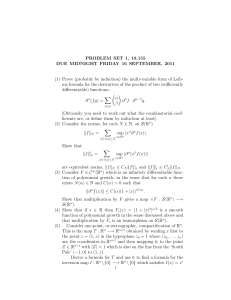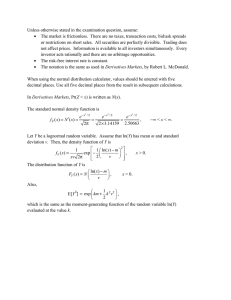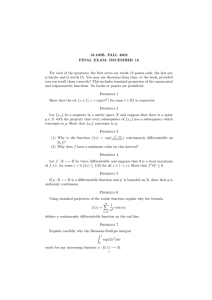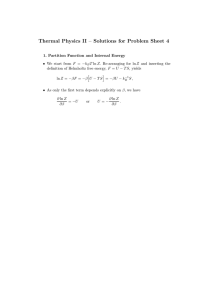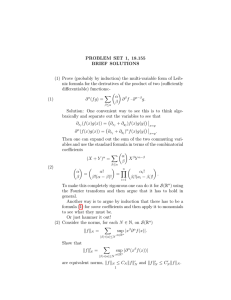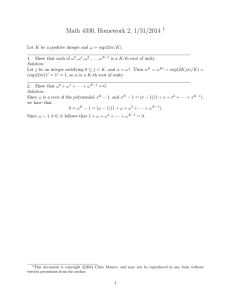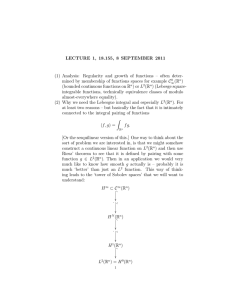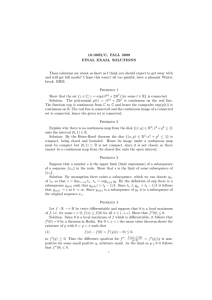PROBLEM SET 1, 18.155 DUE FRIDAY 18 SEPTEMBER, 2015
advertisement
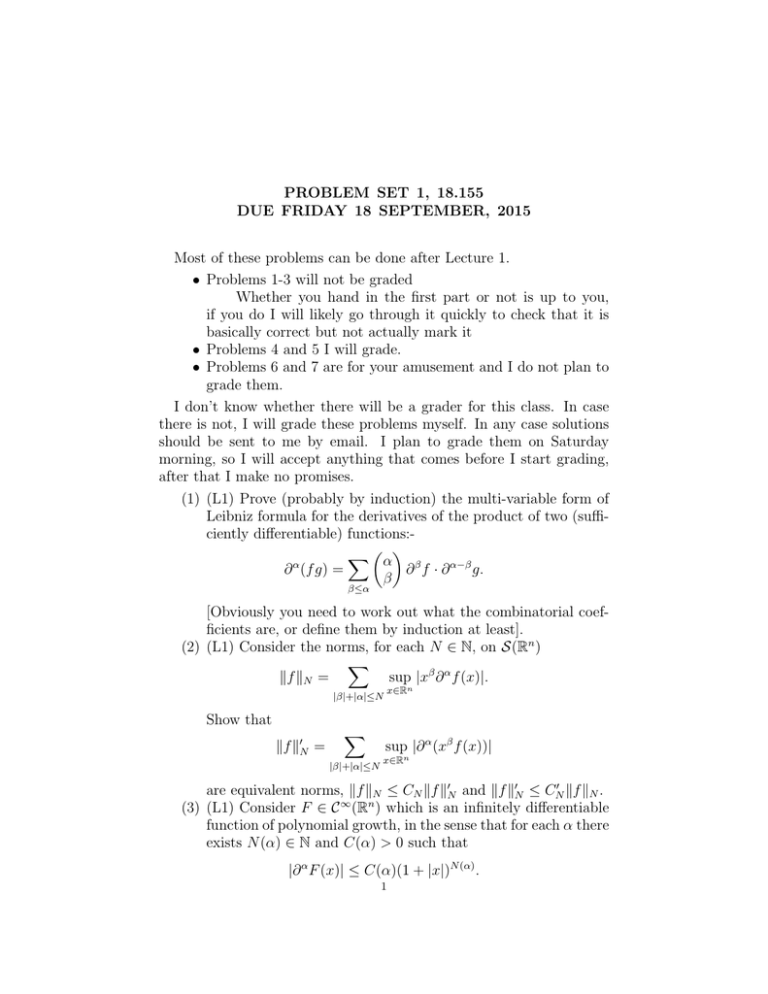
PROBLEM SET 1, 18.155
DUE FRIDAY 18 SEPTEMBER, 2015
Most of these problems can be done after Lecture 1.
• Problems 1-3 will not be graded
Whether you hand in the first part or not is up to you,
if you do I will likely go through it quickly to check that it is
basically correct but not actually mark it
• Problems 4 and 5 I will grade.
• Problems 6 and 7 are for your amusement and I do not plan to
grade them.
I don’t know whether there will be a grader for this class. In case
there is not, I will grade these problems myself. In any case solutions
should be sent to me by email. I plan to grade them on Saturday
morning, so I will accept anything that comes before I start grading,
after that I make no promises.
(1) (L1) Prove (probably by induction) the multi-variable form of
Leibniz formula for the derivatives of the product of two (sufficiently differentiable) functions:X α α
∂ β f · ∂ α−β g.
∂ (f g) =
β
β≤α
[Obviously you need to work out what the combinatorial coefficients are, or define them by induction at least].
(2) (L1) Consider the norms, for each N ∈ N, on S(Rn )
X
sup |xβ ∂ α f (x)|.
kf kN =
|β|+|α|≤N
x∈Rn
Show that
kf k0N =
X
|β|+|α|≤N
sup |∂ α (xβ f (x))|
x∈Rn
are equivalent norms, kf kN ≤ CN kf k0N and kf k0N ≤ CN0 kf kN .
(3) (L1) Consider F ∈ C ∞ (Rn ) which is an infinitely differentiable
function of polynomial growth, in the sense that for each α there
exists N (α) ∈ N and C(α) > 0 such that
|∂ α F (x)| ≤ C(α)(1 + |x|)N (α) .
1
2
PROBLEM SET 1, 18.155 DUE FRIDAY 18 SEPTEMBER, 2015
(4)
(5)
(6)
(7)
(1)
Show that multiplication by F gives a map ×F : S(Rn ) −→
S(Rn ).
(L1) Show that if s ∈ R then Fs (x) = (1 + |x|2 )s/2 is a smooth
function of polynomial growth in the sense discussed above and
that multiplication by Fs is an isomorphism on S(Rn ).
(L1)
Consider one-point, or stereographic, compactification of
Rn . This is the map T : Rn −→ Rn+1 obtained by sending x
first to the point z = (1, x) in the hyperplane z0 = 1 where
(z0 , . . . , zn ) are the coordinates in Rn+1 and then mapping it to
the point Z ∈ Rn+1 with |Z| = 1 which is also on the line from
the ‘South Pole’ (−1, 0) to (1, x).
Derive a formula for T and use it to find a formula for the
inversion map I : Rn \{0} −→ Rn \{0} which satisfies I(x) = x0
if T (x) = (z0 , z) and T (x0 ) = (−z0 , z). That is, it correspond to
reflection across the equator in the unit sphere.
Show that if f ∈ S(Rn ) then I ∗ f (x) = f (x0 ), defined for
x 6= 0, extends by continuity with all its derivatives across the
origin where they all vanish.
Conversely show that if f ∈ C ∞ (Rn ) is a function with all
derivatives continuous, then f ∈ S(Rn ) if I ∗ f has this property,
that all derivatives extend continuously across the origin and
vanish there – i.e. they all have limit zero at the origin.
(L1) Prove that S(Rn ) is a Montel space which means that it
has an analogue of the Heine-Borel property. Namely, (you have
to show that) if D ⊂ S(Rn ) is closed and ‘bounded’ in the sense
that for each N there exists CN such that kφkN ≤ CN for all
φ ∈ D, then D is compact.
(L2)
A) ‘Recall’ that if u : Rn −→ C is measurable and
(1 + |x|)−N u ∈ L1 (Rn )
R
for some N then I(u)(φ) = uφ, for φ ∈ S(Rn ) defines an
element I(u) ∈ S 0 (Rn ).
B) Now, refute the idea that these are the ‘most general’ functions which define distributions – this is a dangerously
vague statement anyway and I’m sure you would not say
such a thing. NAMELY observe that
u(x) = exp(i exp(x))
PROBLEM SET 1, 18.155
DUE FRIDAY 18 SEPTEMBER, 2015
3
defines an element of S 0 (R) and hence conclude that, in a
sense you should make clear, so does
(2)
exp(x) exp(i exp(x))
but that this does NOT satisfy (1) above.
